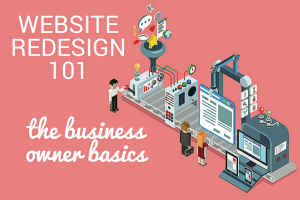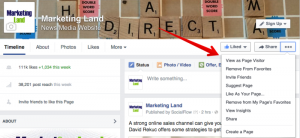There are a lot of moving parts in today’s comprehensive demand generation strategies. And all signs indicate that as B2B marketing teams garner greater responsibilities within organizations, demand gen requirements will only expand.
This complexity has created a need for demand orchestration frameworks and infrastructures that enable top-of-funnel efficiency and lead to bottom-funnel results. To help make sense of the chaos, here’s a simple three-tier framework of the essential parts of a comprehensive demand generation plan.
The 3 Tiers of a Demand Generation Plan
Let’s zoom out and take a look at the three primary levels of a demand generation plan, which encompass both the strategic, tactical and technical aspects of B2B marketing:
- Strategy: What is your overarching plan to achieve your team’s goals?
- Tactics: What specific actions will you take to implement your strategy?
- Technologies: What tools are required to support your tactics?
Tier #1 Strategy: What Do You Want to Accomplish and How?
Part 1.1: Goals & Objectives
Scott Vaughan, CMO at Integrate, has written that “B2B marketing teams and sales organizations too often communicate in vague, general terms.” What did he mean? Marketing and sales teams all too often use qualitative terminology – beyond what can be supported by quantitative metrics – to convey ideas. This easily leads to confusion, inefficiency and low productivity.
Perhaps just as harmful to companies, many B2B marketing teams focus on out-dated, short-sighted metrics such as top-funnel lead volume, or worse, vanity metrics like Facebook twitter likes. Basing decisions on the wrong metrics can be just as problematic as not being data-driven at all.
Your demand gen strategy should focus on two overarching goal categories:
- The prospect and the customer
- Sales pipeline and revenue
In the words of Vaughan, “everything else is just noise.”
Obviously, increasing each of these will greatly depend on achieving key objectives, such as generating quality sales-accepted leads (SALs) for sales reps to convert into pipeline opportunities. The main point, however, is that you should have a clear idea of how each individual marketing effort is key to either creating new customers or increasing revenue.
Part 1.2: Team members and roles
What does the “ideal” demand marketing team look like?
Well, that depends. It depends a lot on the size of your company and your budget. We spoke to 40 game-changing B2B marketers a few months back and found much variation in how successful companies approach team members and roles for demand gen.
Myk Pono, Director of Marketing at Aptrinsic, blogged on Medium that an “ideal” B2B marketing team at an enterprise may include:
- Content Manager
- Web Manager
- Paid Acquisition Manager
- Marketing Ops Manager (Automation & Analytics)
- Marketing Lifecycle Manager
- Social Media & PR Manager
- Event & Campaign Manager
At a startup, Pono alternatively proposed the idea of three core team members who focus on lifecycle management, web dev and content, while outsourcing design, paid acquisition and marketing ops.
I take a different approach to marketing team roles. The variance between job titles and job responsibilities in marketing are so great that it hardly makes sense to say what roles a team needs. For example, within some organizations, demand gen managers handle the lead nurturing via marketing automation platforms (MAP). For other teams, marketing ops handles all things MAP, while demand gen focuses on acquiring the leads. Situations like this occur all over B2B marketing, so instead of saying what titles are needed, it’s far better to just focus on the tasks that must be completed to implement your strategy and make sure they’re logically and efficiently distributed to the individuals with the right skills, resources and time.
Part 1.3: Target audience
If you’re not using comprehensive buyer persona profiles and/or target-account profiles based on in-depth research (e.g., closed-loop insights from your MAP and CRM data, sales and customer success teams, customer interviews, predictive analytics models, etc.), it’s time to take a step back.
Understanding your target accounts and personas is key, even if your company is just beginning your demand generation journey. At minimum, your target audience profiles should list industry, audience job titles/roles and pain points.
Once you’ve got these target audience basics down and aligned with your ideal customers, you’ll definitely need to go deeper and start filling out specifics regarding the following categories:
- Firmographic info
- Position info
- Their goals, motivations and challenges
- Their preferred resources
To see a full list of data types you’ll want to gather to create full persona and account profiles, check out this blog post: “A Useful Template to Develop (or Improve) Your B2B Buyer Personas”
Part 1.4: Content
Creating and using good marketing content is complex. There are many blogs and eBooks dedicated to the topic of effective content for demand generation. In fact, last year we published a Template for Developing a B2B Content Marketing Strategy So, I won’t spend too much time on the topic here.
Here’s the most important thing: highly-effective demand generation marketers evaluate their content strategy often, quarterly to bi-annually works well. They also evaluate their messaging strategy at least annually.
Things to evaluate when you’re looking at your content as a whole and how it affects your demand generation engine include:
- Persona messaging alignment
- Quarterly content strategy (including goals, themes, premium content and assets)
- Distribution of owned media (blog, website, search, social and webinars)
- Distribution of paid media (syndication, events, sponsorships, display, paid search, etc.)
Part 1.5: Nurturing
Bill Colbert, Founder at Treetop Growth Strategy, says that marketers should think about nurturing from the customers perspective. He writes that lead nurturing is an opportunity to show your prospects how you can solve their greatest challenges.
That’s why one of the most common ways that companies assign newly won leads to a workflow is by asking them: “What’s your greatest challenge?” Colbert writes, “We saw a 27% improvement in sales appointments set when the pain point was referenced in the salesperson’s initial benefit statement.”
Ensuring that the content and messaging in your lead nurturing workflows are aligned with your customers’ pain points is just one way to measure efficacy. Timing, frequency and the length of lead nurturing workflows are other crucial angles to consider.
Just as importantly, ensure your leads are able to dictate the conversation, and that you’ve got behavioral-based strategies in place to communicate with less-engaged leads less often, and accelerate how you’re working with your most-engaged leads.
Part 1.6: Sales Alignment
Kathy Macchi, Vice President of Consulting Services at Inverta, says, “The most important component in the digital ecosystem is the bond between Sales and Marketing…. their ability to share strategies, processes and best practices ultimately results in a competitive advantage.”
Sales alignment isn’t the only type of alignment marketers need. You also need to closely collaborate with customer success and product development. While sales-marketing alignment is simple in theory – you “just” need communication and shared goals – it’s much more difficult in practice.
Where do you start? At minimum, your organization needs shared documentation of lead and funnel-stage definitions, pipeline and lead volume requirements, and lead hand-off and return processes.
Once you’ve got this baseline down, you can move to a monthly reassessment of the shared objectives and start applying advanced tactics – like learning to speak sales’ language and adopting tools to catalog content assets for the sales and customer success teams. Here’s a useful blog that outlines the steps needed to improve sales and marketing alignment at your company: Conjoined Twins: The Emerging Sales-Marketing Relationship
Tier #2 Tactics: The Actions to Implement Your Strategy
Part 2.1: Content Distribution
Thanks to your content management system (CMS), marketing automation platform (MAP) and social distribution tools, you probably have some idea of how your inbound content is performing.
But do you have a full-picture of top-of-funnel lead source performance, including how your paid channels stack up? That’s where things can start to get fuzzy, or at least really complicated, for a lot of demand generation marketers.
It’s easy to measure and manage each of these channels, like events or third-party lead gen partners, individually. While there’s value in such one-off measurement, it’s not nearly as valuable as understanding the full picture, which allows you to compare various uses of content – channels, lead sources, personas, account types, etc. – against one another to understand which content distribution combinations generate the most pipeline value.
To acquire content performance transparency requires that you centralize all the sources of your content distribution, including third-party sources/partners, inbound channels and even events. With these insights, you gain the ability to allocate your content marketing budget more wisely.
Part 2.2: Lead Data Processing
The middle and bottom of the marketing funnel have been pretty well automated by CRM and MAP systems. Yet, way too many marketers still manually manage the ways in which they ready and inject their lead data into these systems.
At Integrate, our interactions with B2B marketing teams have revealed a few scary truths about the state of lead data. Teams spend 20-to-80 hours each month on tasks like manual lead scrubbing, deduplication, formatting and uploading to MAPs. That’s a lot of time.
Why such focus on lead data processing? Our research has also found that 45% of lead records contain bad data. The most common problems are duplicated data, bad field data, missing fields, or invalid formatting. You can check out the report here.
You can outsource these efforts, but it’s expensive and third-party agencies don’t necessarily have the same nuanced understanding of your target accounts or market, especially not at first. You could hire interns just to scrub data. Or, you could adopt technologies that do the heavy lifting, automate high-quality lead upload, prevent wasted budget on bad leads and speed up your lead routing so you can start nurturing asap.
Adopting tools to support real-time lead routing processes enabled Iron Mountain to increase MQL conversion rates from 6% to 22% (that’s 366%).
Part 2.3: Lead Scoring
Once upon a time, sales-qualified leads (SQLs) were defined by a cute little acronym:
- B: Budget
- A: Authority
- N: Need
- T: Time
A marketing-qualified lead (MQL) with the budget, authority, need for a product and timely need was sales-qualified, or BANT.
Today, thanks to behavioral-based insights across channels and predictive tools and demand generation strategies like account-based marketing (ABM), BANT has given way to more complex lead-qualifying tactics that assign points for various activities, demographics and firmographics.
CRMs and MAPs have eliminated the task of heavily manual and automated lead scoring – as long as your lead scoring is based on and up to date with current funnel stage definitions. And this is highly dependent on regular funnel performance evaluation and conversations with sales and customer success teams.
To succeed with lead scoring, you need your lead data processing down (to ensure the integrity of your database), full-funnel intelligence, regular communication between departments and technologies that automate scoring based on your updated scoring criteria.
Part 2.4: Optimization
If your demand generation strategy has hit a plateau, don’t be too alarmed – it’s normal. And it doesn’t even mean that it wasn’t a good strategy. It simply means that factors have changed and you must optimize your strategy and/or tactics accordingly.
That said, truly informed optimization isn’t easy. We’ll be the first to admit that measuring the effectiveness of all strategies, channels, sources and systems with regard to driving demand is one of the hardest parts of B2B marketing.
Full-funnel measurement isn’t limited to the top or bottom. It’s measurement at every stage, including:
- Lead velocity from inbound and outbound sources
- Lead to marketing-qualified lead (MQL) conversions
- MQL to opportunity conversion rates
- Closed-won business
…and you should strive to measure each of these metrics by various lead sources/partners, channels, content assets/messaging, integrated programs, personas and account types.
With these metrics, you can ascertain your pipeline’s health as well as identify the tactics that are bolstering or undermining that health.
Having the processes and technologies in place to understand your entire funnel is a critical step for B2B marketing teams. Demand marketing maturity involves adopting both the tools and process agility to make optimization decisions as quickly as possible to fine-tune your programs mid-flight:
- Adding or subtracting specific lead sources, channels and campaigns
- Changing budget and budget allocation across channels and lead sources
- Optimizing content to increase conversions
- Adjusting lead- and/or account-targeting criteria
Tier #3 Technology: The Tools Required to Support Tactics and Strategy
Part 3.1: Tools
Technology can’t fix a bad process.
It’s a saying we embrace at Integrate, which may be unusual among technology companies. If you expect a new piece of MarTech to solve a problem without you having a clear understanding of the problem and the process by which it should be solved, the tech you adopt to automate that solution is unlikely to work out.
Remember: technology simply automates processes; you need to know what it’s automating and why.
That being said, technology is crucial for today’s B2B marketing teams. Without marketing tech to automate all the menial marketing tasks, demand gen pros wouldn’t scratch the surface of what’s needed to stay competitive today. Could you imagine sending one-off emails to each contact in your database every time you wanted to promote piece of content or event?
Without getting too specific about vendors or recommendations, here are the major marketing tech categories that support a successful demand generation strategy. There’s no guarantee you need all of the following (or just one tool from each category), but you may be struggling if you’re missing core MarTech components:
- Marketing automation
- CRM (though this usually falls under sales tech)
- Content management
- Website personalization
- Advocate marketing
- Team organization & project management
- Data intelligence
- Demand orchestration software
- SEO management
- Display and social management
- Account-based marketing (though this is usually a mix of many of the other techs here, just more specific to ABM strategies)
- Funnel analytics
- Predictive analytics
- Event management
How Does Your Demand Generation Plan Stack Up?
A demand generation plan is just like a symphony – one out-of-tune instrument can through everything off. An entire section of the orchestra, like your processes or technology, can result in much worse issues.
Business & Finance Articles on Business 2 Community
(50)
Report Post





